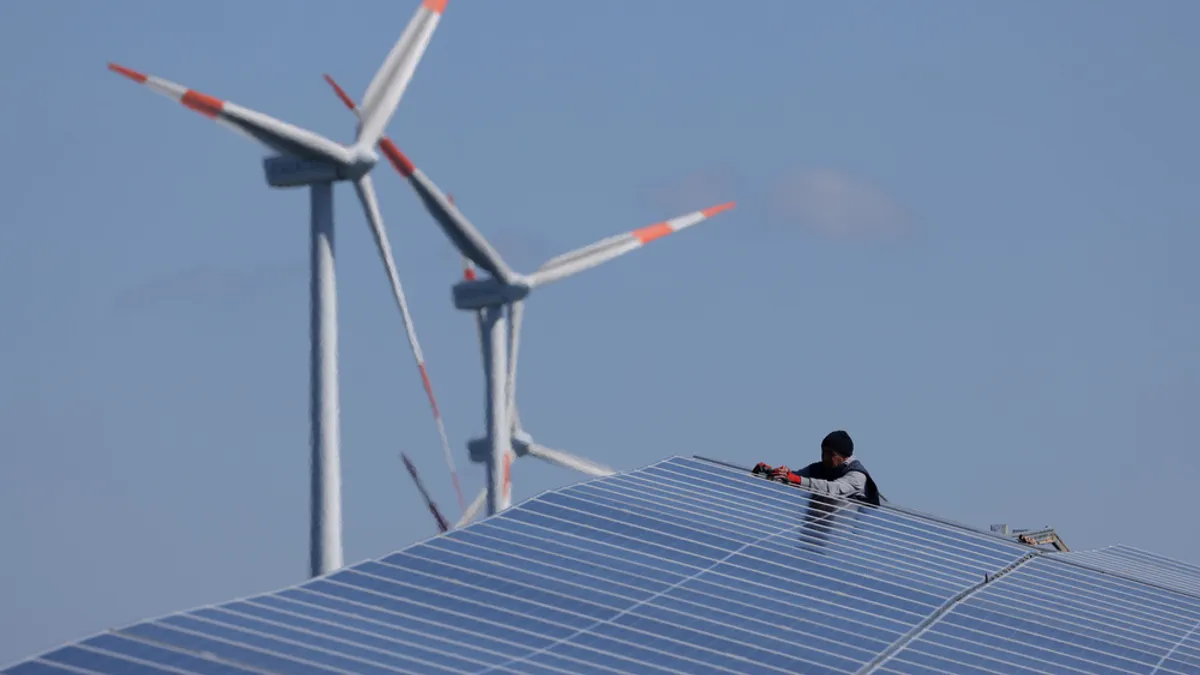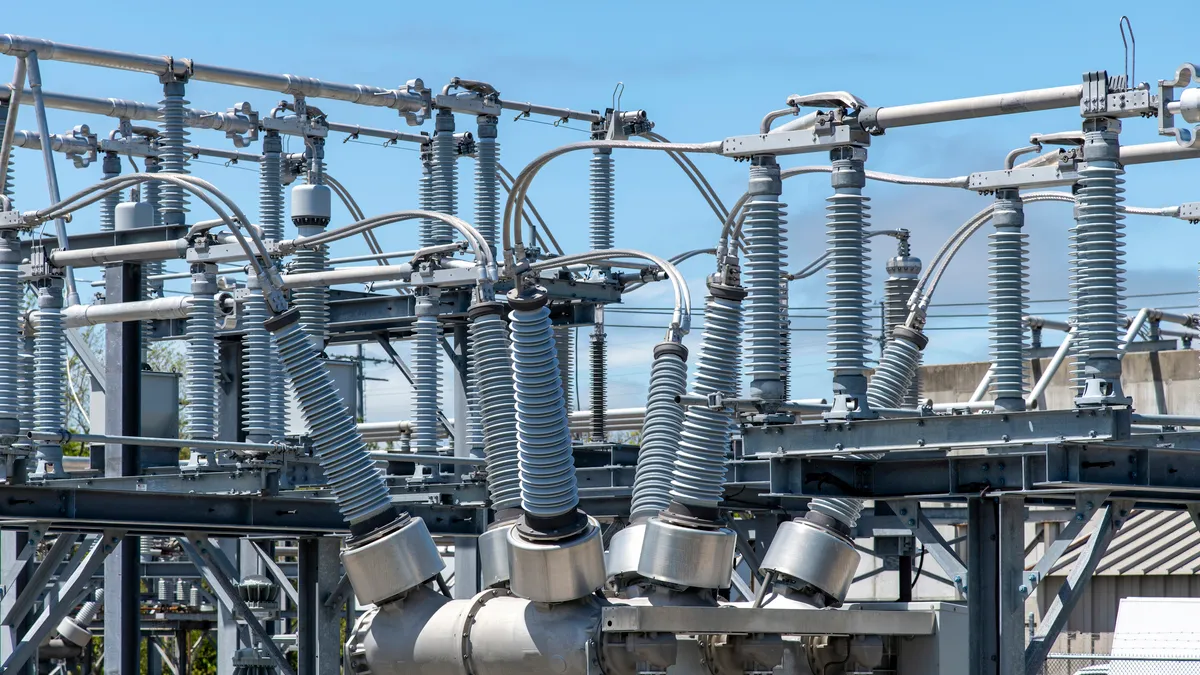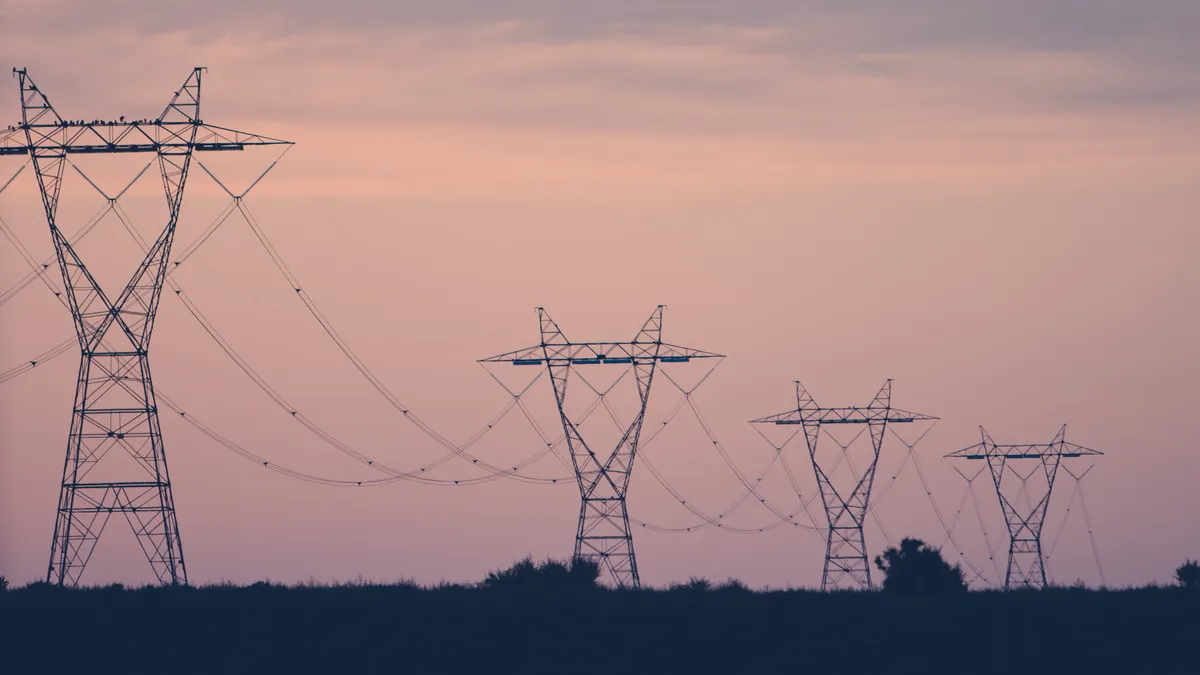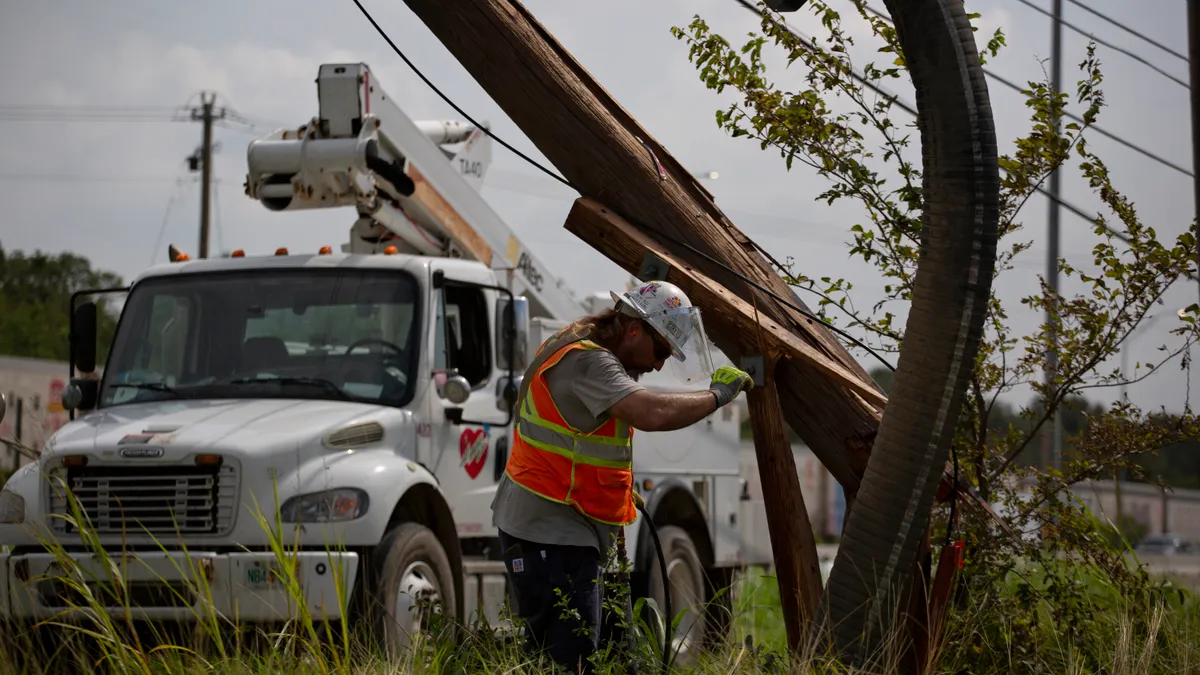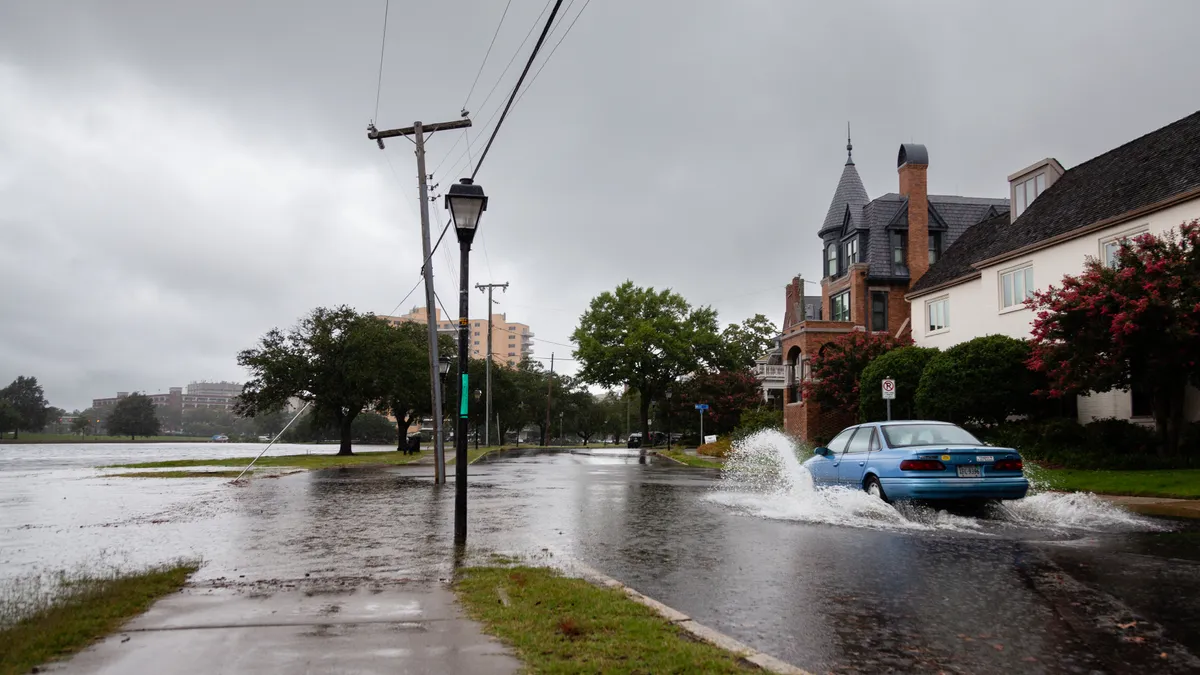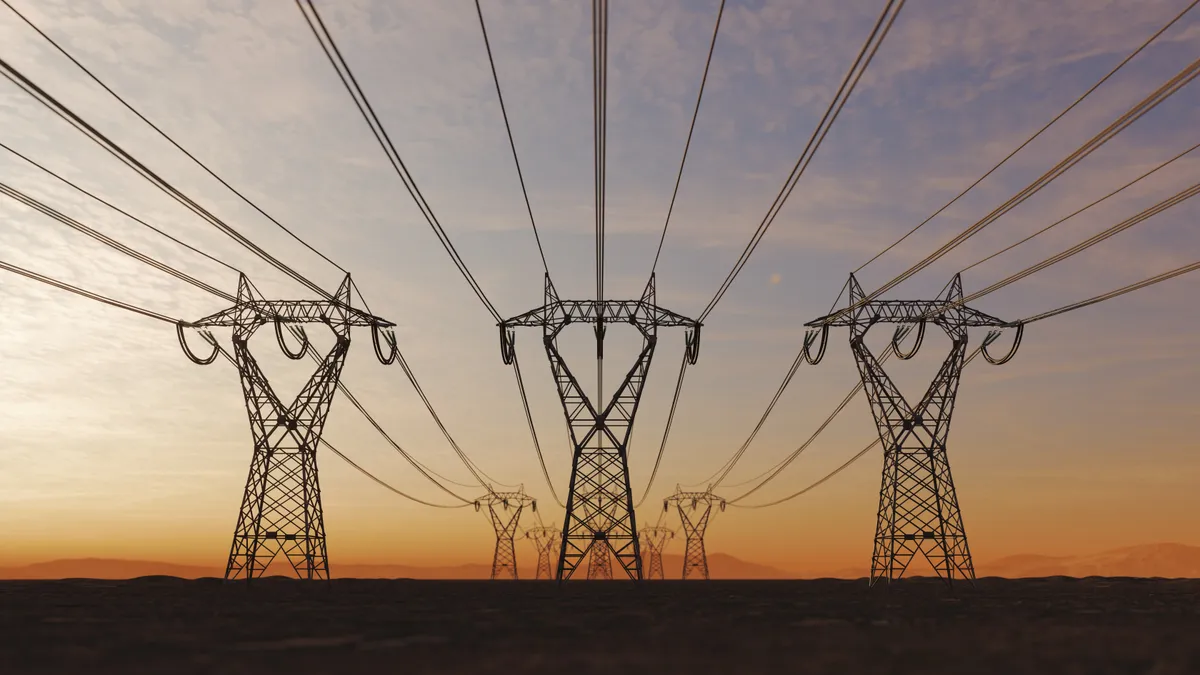At a special open meeting Monday, the Federal Energy Regulatory Commission on a 2-1 vote issued a long-awaited transmission planning and cost allocation reform rule that aims to help the United States meet its long-range transmission needs.
The U.S. is experiencing significant load growth, the power supply mix is changing and the grid is being pushed to the brink by extreme weather, FERC Chairman Willie Phillips said during the meeting. But high-voltage power line construction hit a record low in 2022, and much of that construction was “Band Aid fixes,” he said, noting that FERC hasn’t updated its transmission planning requirements in more than a decade.
“This rule cannot come fast enough,” Phillips, a Democrat, said during the meeting. “There is an urgent need to act to ensure the reliability and the affordability of our grid.”
The rule — Order 1920 — will take effect 60 days after it is published in the Federal Register. Transmission operators will have 10 months to file plans to meet most of its requirements. If approved, those plans would then take effect within a year.
What’s in the rule
The rule — proposed in April 2022 — requires transmission providers to consider forward-looking factors when developing their plans, such as utility resource plans, state energy goals, corporate energy procurement commitments and interconnection queues. The transmission plans must look ahead at least 20 years.
Transmission operators must also consider seven economic and reliability benefits when considering possible transmission projects, including production cost savings and how transmission could help grid operators handle extreme weather events.
The rule requires transmission providers to hold a six-month engagement period with relevant state entities to discuss possible cost allocation methods and/or a state agreement process to determine who pays for new transmission selected in the long-range transmission plans.
Under the rule, transmission planners must reevaluate in certain circumstances projects that have been approved, but not yet built, including if their cost estimates increase significantly.
It requires transmission providers to consider alternative transmission technologies — dynamic line ratings, advanced power flow control devices, advanced conductors and transmission switching — in regional transmission planning processes as an alternative to building new lines. The technologies can make the existing transmission system more efficient and can typically be put in place quickly.
The rule requires transmission providers to consider larger, more efficient transmission projects — called “right-sized” projects — as part of local transmission planning, which typically focuses on replacing and upgrading local power lines. Incumbent utilities would have a right-of-first-refusal, or ROFR, to build their share of any right-sized projects.
In a change from FERC’s initial proposal, the agency declined to give investor-owned utilities and public power utilities a ROFR for jointly built transmission projects. The ROFR would have given them the right to build a project without it going out to bid by independent transmission companies. FERC said it will consider ROFR issues in other proceedings.
In another change from the proposal, FERC will continue to allow transmission owners to collect “construction work in progress” from ratepayers to recover their project-related expenses as they build their projects instead of waiting for a rate case after the facility is brought online. FERC said it will consider changes to its CWIP incentive in a separate proceeding on transmission incentives.
‘Charade’ of state role: Christie
FERC Commissioner Mark Christie, a Republican who voted against the rule, said it was rushed so it would be safe from being overturned under the Congressional Review Act if Republicans win Congress and the presidency in the upcoming election.
The rule “utterly fails” to protect consumers, according to Christie. “Instead, this rule is a pretext to enact a sweeping policy agenda that Congress never passed, a policy that is intended to facilitate a massive transfer of wealth from consumers to for-profit special interests, particularly generation developers, primarily wind and solar transmission developers, [and] influential powerful corporations with preferences as to the types of power they want to purchase,” he said.
The rule is “a blatant violation” of the U.S. Supreme Court’s major questions doctrine, Christie said. The doctrine, established in 2022, bars agencies from issuing regulations with “vast economic and political significance” without clear statutory authority.
Further, in a change from existing practice, the rule combines reliability, economic and public policy driven projects into one bucket for the same cost allocation methodology, Christie said.
“Consumers … will be forced to pay for projects that clearly promote another state's public policy or corporate preferred power policies,” Christie said.
The state role has been “essentially gutted” from the role envisioned in the proposed rule, according to Christie.
“The provisions for state consent to planning criteria and most importantly to regional cost allocation have effectively been eliminated,” Christie said. “Instead … we have a charade of state involvement.”
‘Unprecedented state role’: Phillips, Clements
The commission’s two other members said states will have an unprecedented role in transmission planning and cost allocation.
The costs of failing to plan for the grid’s future are incalculable, according to FERC Commissioner Allison Clements, a Democrat. “Planning with a longer-term view will avoid piecemeal, inefficient outcomes that ultimately harm consumers,” she said during the meeting. “Customers’ bills will skyrocket if states go at it alone in ensuring grid reliability.”
In a joint concurrence, Phillips and Clements said Christie’s “myopic” approach would violate the principle that beneficiaries of transmission pay for their share of its costs and would harm grid reliability.
“While we agree with his emphasis on the importance of cooperation with states — and have created unprecedented opportunities for such cooperation throughout this final rule — his radical new approach would permit a state to receive economic, resilience, and reliability benefits from new energy infrastructure, but not be charged a single cent unless they voluntarily agree to pay,” they said.
Christie’s approach would give every state the right to veto their share of transmission costs, according to Phillips and Clements.
Also, Christie misrepresents the rule with his focus on public policy projects as one of the factors transmission providers must consider in their planning process, they said.
“The requirement to consider state public policies is part of the much broader requirement to comprehensively consider all significant factors shaping future transmission needs, where other factors, including the fundamental economic and reliability drivers, play a much bigger role,” Phillips and Clements said.
Further, a state would only pay for transmission in proportion to the benefits it receives from the infrastructure, which is “black letter” law and not subject to dispute under the Federal Power Act, according to Phillips and Clements.
The rule gives states an unprecedented opportunity to shape transmission planning and cost allocation, elevating the system of cooperative federalism with the states to a degree not seen in the history of FERC, they said.
Phillips and Clements disagreed that the rule violated the major questions doctrine.
“Legally, the rule is a straight-down-the-middle-of-the-fairway shot,” Clements said at Monday’s meeting.
States have a choice to make, according to Clements. “You can get drawn into a lose-lose debate over who, precisely, caused the need for each specific system upgrade as the grid’s inadequacy festers, or you can take advantage of the unprecedented seat at the table this rule provides,” she said.





